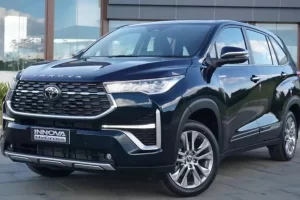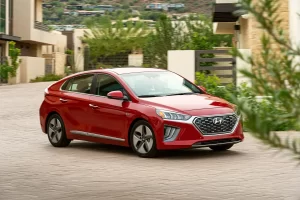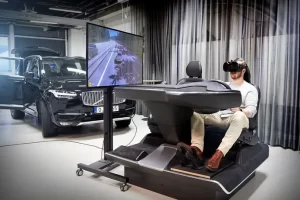
Parents searching for their ideal vehicle can find fantastic used deals, featuring advanced safety features to keep their children secure. Families need a large cargo area for strollers and other gear, with comfortable ride quality that offers enough seating capacity for child car seats.
Chevrolet Equinox
The Chevy Equinox provides an outstanding combination of safety, space and comfort. Its latest models boast family-oriented features like rear-seat alert and lane-keep assist that help drivers ensure all seats have been checked before exiting or opening them up.
Teen Driver Technology helps new drivers develop safe driving habits by temporarily pausing audio until all front-seat passengers have buckled up, producing in-vehicle reports and more. 2024 models offer more contemporary styling with their LT, RS and ACTIV trim options with unique wheels and interior designs.
Honda Pilot
The Honda Pilot SUV provides ample room for the whole family and features a striking front end that is sure to turn heads.
A sophisticated 3.5-liter V6 engine delivers power needed to reach highway speeds smoothly and tow 3,500 pounds with ease. 2021 marks the addition of TrailSport trim as well as improvements such as an 8-inch color touchscreen supporting Apple CarPlay and Android Auto smartphone integration.
Ford Explorer
When selecting a family vehicle, safety should always come first. At Clay Maxey Ford in Harrison, Arkansas we carry 2024 Ford Explorer models equipped with features designed to protect both travelers on road trips as well as local adventures.
This SUV features Ford Co-Pilot360(tm), which provides driver assist technologies that help keep both you and your passengers safe. Other convenience features include power liftgate, wireless device charging capability, and rear seat dual screen entertainment system.
Kia Telluride
Kia’s Telluride 3-row SUV stands out with an upscale cabin, impressive tech features, adult-friendly third row seating and an enjoyable driving experience. Recently, it underwent minor revisions with new exterior features to complement its already impressive driving dynamics. This year marked its minor redesign as well as an addition of an X-Line trim offering distinctive exterior details.
The new 2023 model also introduces an updated 12.3-inch touchscreen infotainment system that integrates seamlessly with its digital instrumentation display on the dashboard, as well as providing Wi-Fi hotspot capability and digital key system compatible with smartphones.
Chevrolet Traverse
With car accidents occurring every six seconds, families need vehicles with excellent safety ratings. The 2024 Traverse offers an abundance of standard safety and driver assistance technologies.
Forward collision alert is designed to warn of vehicles entering your blind spot and promote safe driving habits among teen drivers, while rear seat reminder is used as a helpful tool to remind drivers to check back seats regularly for forgotten passengers.
Chevrolet Silverado
When purchasing a family vehicle, there are numerous considerations that must be made before making your selection. One key element is how comfortable the vehicle will be during long trips.
Reputable car dealers offer an assortment of vehicles to help customers find their ideal match. For instance, the 2024 Silverado boasts many luxurious comfort features including premium Bose audio system and rear under-seat storage space.
Other available features include adaptive cruise control and surround vision cameras. Furthermore, Honda Passport, Kia Telluride and Chrysler Pacifica vehicles all include rear-seat USB ports to keep everyone connected on road trips.
Volkswagen Atlas
The Atlas is a comfortable three-row midsize SUV with excellent cabin appointments and capable family hauling abilities, but sloppy steering and poor cabin ergonomics prevent it from standing out among its rivals such as Kia Telluride and Mazda CX-90.
2024 marks the introduction of a 12-inch infotainment display as the centerpiece for its newly revamped cockpit. A few touch-sensitive sliders control basic climate functions; most other controls require either swiping through confusing submenus or digging deeper.
Chevrolet Palisade
Some three-row SUVs aim for toughness while the Palisade strikes an elegant balance by offering superior competence with an air of gentility.
As well as modern high-tech safety features, this car features an advanced 12.3-inch infotainment display with Android Auto and Apple CarPlay compatibility. A 12-speaker Harmon-Kardon premium audio system plays whatever K-Pop your children demand while Quiet Mode mutes the back seat speakers for peaceful travels.
Standard rear seat LATCH anchors accommodate two child safety seats. Trunk space is ample at 86 cubic feet with all rows folded away.
Ford Fusion
The Ford Fusion offers many features that make it suitable for family use, including its spacious back seat that can fit two car seats or be adjusted to accommodate adults.
The second generation was last redesigned for 2013 using standard Ford Co-Pilot360 driver assistance technology, including pre-collision assist, automatic emergency braking, blind spot information system with cross-traffic alert and lane-keeping assist.
A used Ford Fusion could be your ideal family vehicle in Springville. Offering plenty of comfort and advanced tech features to make daily life simpler.










